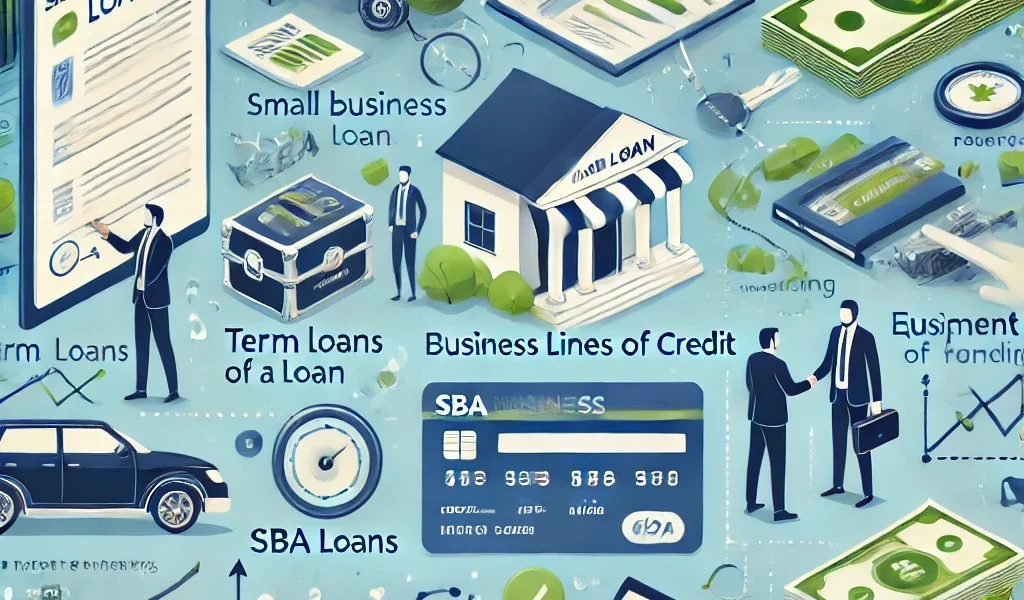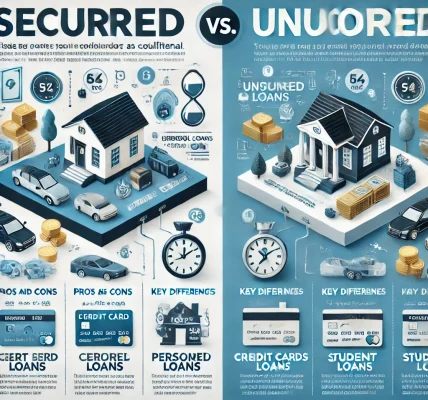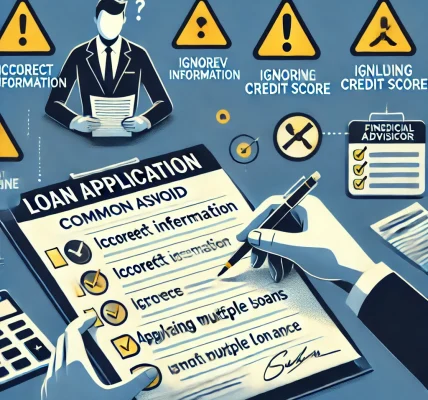Introduction
Starting a small business requires capital, and for many entrepreneurs, securing a loan is a crucial step in turning their vision into reality. However, navigating the world of small business loans can be challenging. Understanding the types of loans available, eligibility criteria, and the application process can increase your chances of securing the necessary funding.
This guide will help you understand different types of small business loans, how to qualify, and key strategies to improve your chances of approval.
Types of Small Business Loans
Different financing options cater to specific business needs. Understanding these options helps you choose the best loan for your startup.
1. Term Loans
A term loan is a lump sum of money that is repaid over a fixed period with interest. It can be used for various business expenses, including purchasing equipment, hiring staff, or expanding operations.
- Best for: Established businesses with a strong credit history.
- Loan amounts: Typically range from $5,000 to $5 million.
- Repayment terms: 1 to 25 years.
- Interest rates: Vary based on creditworthiness and lender policies.
2. SBA Loans (Small Business Administration Loans)
SBA loans are government-backed loans with competitive interest rates and long repayment terms. The U.S. Small Business Administration guarantees a portion of the loan, reducing risk for lenders.
- Best for: Small businesses that may not qualify for traditional bank loans.
- Loan amounts: Up to $5 million.
- Repayment terms: Up to 25 years.
- Interest rates: Lower than traditional loans.
3. Business Lines of Credit
A business line of credit provides flexible access to funds up to a set limit. Borrowers only pay interest on the amount used.
- Best for: Businesses needing short-term capital for operational expenses.
- Loan amounts: $10,000 to $500,000.
- Repayment terms: Ongoing access to funds.
- Interest rates: Typically higher than term loans.
4. Equipment Financing
This type of loan is specifically for purchasing business equipment, such as machinery, vehicles, or office technology.
- Best for: Businesses needing equipment but lacking upfront capital.
- Loan amounts: Up to 100% of equipment value.
- Repayment terms: 3 to 10 years.
- Interest rates: Lower than unsecured loans.
5. Invoice Financing
Invoice financing allows businesses to borrow money against outstanding invoices, helping with cash flow issues.
- Best for: Businesses with slow-paying clients.
- Loan amounts: Up to 90% of invoice value.
- Repayment terms: Short-term until invoices are paid.
- Interest rates: Higher due to risk factors.
6. Merchant Cash Advances
A merchant cash advance provides upfront capital in exchange for a percentage of future credit card sales.
- Best for: Businesses with strong daily sales but poor credit history.
- Loan amounts: $2,500 to $250,000.
- Repayment terms: Daily or weekly repayments.
- Interest rates: High, often exceeding 20% APR.
How to Qualify for a Small Business Loan
Lenders evaluate various factors before approving a loan application. Here are key elements that affect eligibility:
1. Credit Score
A high credit score increases approval chances and secures lower interest rates.
- Personal credit score: Most lenders require a minimum of 600-700.
- Business credit score: Ranges from 0 to 100 (higher is better).
2. Business Plan
A solid business plan demonstrates financial stability and future growth potential. It should include:
- Market analysis
- Revenue projections
- Loan purpose and repayment plan
3. Financial Statements
Lenders review your income statements, balance sheets, and tax returns to assess financial health. Having at least two years of financial records is beneficial.
4. Collateral
Some loans require collateral, such as real estate, equipment, or inventory, to secure funding.
5. Business Age & Revenue
Most lenders prefer businesses with at least 6-12 months of operation and a minimum revenue of $50,000 to $100,000 per year.
How to Secure Funding: Step-by-Step Process
1. Determine Loan Purpose
Clarify why you need funding—whether for expansion, equipment, payroll, or cash flow management.
2. Research Loan Options
Compare lenders, interest rates, and repayment terms to find the best fit.
3. Check Your Credit Score
Improve your credit score by paying off existing debts and correcting errors in credit reports.
4. Gather Required Documents
Prepare essential documents such as:
- Business licenses
- Financial statements
- Tax returns
- Business plan
5. Apply with Multiple Lenders
Submit applications to multiple lenders to compare offers and improve chances of approval.
6. Review Loan Terms
Carefully read the interest rates, repayment schedules, and hidden fees before accepting a loan.
7. Receive Funds & Use Wisely
Once approved, use the funds as planned to grow your business efficiently.
Tips to Improve Loan Approval Chances
- Build Business Credit: Open a business credit card and make timely payments.
- Reduce Debt-to-Income Ratio: Lower existing debts before applying.
- Establish Strong Cash Flow: Maintain consistent revenue and financial discipline.
- Seek Professional Help: Consult financial advisors or business mentors for guidance.
Conclusion
Securing a small business loan is a crucial step in launching or expanding a startup. Understanding the different loan types, meeting lender requirements, and preparing a strong application can significantly increase approval chances.
By choosing the right financing option and managing the funds responsibly, entrepreneurs can ensure long-term business success and financial stability.




